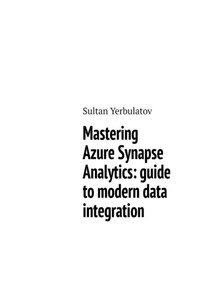GPT, which stands for “Generative Pre-trained Transformer,” is a state-of-the-art language model developed by OpenAI. It utilizes deep learning techniques, particularly transformer architectures, to generate human-like text responses based on given input prompts. GPT models have revolutionized natural language processing tasks and demonstrated impressive capabilities in various applications, including chatbots, language translation, content generation, and more.
GPT models are pre-trained on vast amounts of text data, which helps them learn grammar, context, and semantic relationships between words and sentences. This pre-training enables GPT models to generate coherent and contextually appropriate responses when provided with input text prompts. GPT models can be fine-tuned for specific tasks or deployed as general-purpose language models.
As a GPT Operator, your role involves managing and operating the infrastructure and systems required to deploy and maintain GPT models, ensuring their optimal performance and responsiveness.
1.2 Who is a GPT Operator?
A GPT Operator is a skilled professional responsible for the management, operation, and maintenance of GPT systems and infrastructure. They possess a deep understanding of GPT models, their deployment, and the underlying technologies involved. GPT Operators play a crucial role in ensuring the smooth functioning and performance of GPT models.
GPT Operators are typically involved in tasks such as setting up and configuring GPT systems, monitoring their performance, troubleshooting issues, and optimizing the models for various applications. They collaborate closely with data scientists, developers, and other stakeholders to fine-tune GPT models, integrate them into applications, and address any challenges that may arise during operation.
GPT Operators require a solid foundation in machine learning, natural language processing (NLP), and cloud computing. They should be adept at working with large datasets, have a good understanding of programming languages and frameworks, and possess strong analytical and problem-solving skills. Additionally, GPT Operators should be aware of ethical considerations related to AI, including bias mitigation and privacy concerns.
Overall, a GPT Operator plays a critical role in harnessing the power of GPT models and ensuring their efficient operation to deliver high-quality language generation and processing capabilities.
Role and Responsibilities of a GPT Operator
As a GPT Operator, you have a range of responsibilities related to the management and operation of GPT systems. Your role involves ensuring the optimal performance, reliability, and security of GPT models and infrastructure. Here are some key responsibilities:
1. GPT System Setup and Configuration: You are responsible for setting up the GPT system infrastructure, including servers, storage, and networking components. This involves installing and configuring software frameworks, libraries, and dependencies necessary for running GPT models.
2. Model Deployment and Management: You oversee the deployment of GPT models onto the infrastructure. This includes managing the versioning and updates of GPT models, ensuring compatibility with the system, and maintaining a library of available models.
3. Data Preparation for GPT Training: You work closely with data scientists and engineers to preprocess and prepare the data required for training GPT models. This may involve data cleaning, formatting, and ensuring data quality and relevance for optimal model performance.
4. Monitoring and Performance Optimization: You monitor the performance of GPT systems, keeping track of resource utilization, response times, and overall system health. You identify performance bottlenecks and optimize system configurations to achieve optimal throughput and responsiveness.
5. Troubleshooting and Issue Resolution: When issues or errors arise in GPT systems, you are responsible for diagnosing and troubleshooting them. This may involve investigating system logs, analyzing error messages, and working closely with developers and engineers to resolve issues promptly.
6. System Maintenance and Updates: You ensure that GPT systems are up to date with the latest software versions, security patches, and bug fixes. Regular system maintenance tasks, such as data backups, system upgrades, and system monitoring, fall under your responsibility.
7. Collaboration with Data Scientists and Developers: You collaborate with data scientists and developers to fine-tune GPT models for specific tasks or domains. This includes providing insights on system performance, assisting with model optimization, and implementing improvements based on feedback.
8. Security and Privacy Considerations: You ensure that GPT systems adhere to security and privacy best practices. This involves implementing access controls, encryption mechanisms, and data anonymization techniques to protect sensitive information processed by GPT models.














